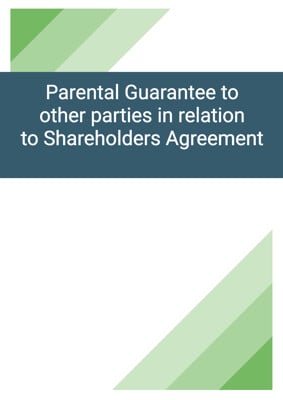How to Tailor the Document for Your Need?
01
Create Document
Fill in the details of the parties. You can click the "Fill with Member’s Information" button to complete it with information saved to your account.
02
Fill Information
Please fill in any additional information by following the step-by-step guide on the left hand side of the preview document and click the "Next" button.
03
Get Document
When you are done, click the "Get Document" button and you can download the document in Word or PDF format.
04
Review Document
Please get all parties to review the document carefully and make any final modifications to ensure that the details are correct before signing the document.
Document Preview
Document Description
This shareholders agreement is a legally binding document that governs the relationship between the parties involved in the formation of a new jointly-owned company. The agreement highlights the importance of the document by emphasizing that it sets out the terms and conditions under which the shareholders will operate and manage the company. It provides a detailed introduction to the entire document, explaining that it covers various aspects such as the interpretation of terms, establishment of the company, capital structure, appointment of directors, reserved shareholder matters, transfer of shares, confidentiality, restrictions on the parties, term and termination, and dispute resolution.
The agreement begins with an interpretation section that defines key terms used throughout the document. It explains the roles and responsibilities of each party, including the directors appointed by each party and the shares owned by each party. The board of directors is responsible for managing the business and affairs of the company, and the agreement outlines the process for appointing and removing directors.
The agreement also includes provisions for reserved shareholder matters, which require the prior approval of the parties. These matters include issues such as the issuance of shares, sale of the company, alteration to the memorandum and articles, borrowing by the company, approval of the annual budget, and appointment of auditors.
The agreement further outlines the process for transferring shares, including the requirement for a transfer notice to be given by the selling party to the other party. The continuing party then has the right to purchase the shares at the specified price or request the fair price to be determined by auditors. If the continuing party does not exercise its right to purchase the shares, the selling party can sell them to a third party purchaser.
Confidentiality is another important aspect of the agreement, with both parties obligated to keep any information acquired in relation to the company or the other party confidential, except in certain specified circumstances.
The agreement also includes provisions regarding the term and termination, allowing either party to terminate the agreement by giving prior notice. In the event of termination, the parties are required to cooperate in placing the company into liquidation.
Overall, this shareholders agreement is a comprehensive document that covers all aspects of the relationship between the parties involved in the jointly-owned company. It provides a clear framework for the operation and management of the company, ensuring that the rights and responsibilities of each party are clearly defined and protected.
How to use this document?
1. Incorporation: As soon as possible after the date of this agreement, the parties should ensure the incorporation of the company in the specified country. This includes choosing a name for the company, preparing the memorandum and articles of association, and determining the authorized share capital.
2. Completion: Completion of the establishment of the company should take place within a specified timeframe, ensuring that each party subscribes for their respective shares and that the necessary agreements, such as asset transfer, distribution, technology license, intellectual property license, supply, services, and trademark agreements, are entered into.
3. Share Capital: The company should have an issued share capital divided into shares owned by each party in the agreed proportions. Any increase in share capital should be agreed upon by the parties.
4. Further Finance: If the company requires further finance, the parties should first approach the company's own bankers. If finance cannot be obtained from the company's own bankers, the parties can provide finance in equal proportions.
5. Directors and Management: The business and affairs of the company should be managed by a board of directors consisting of directors appointed by each party. The parties should ensure that appointments and removals of directors are properly notified and that the quorum for board meetings is met.
6. Reserved Shareholder Matters: Certain matters, such as the issuance of shares, sale of the company, and alteration to the memorandum and articles, require the prior approval of the parties. The parties should ensure that these matters are properly approved in accordance with the agreement.
7. Transfer of Shares: If a party wishes to sell or dispose of its shares, it should give a transfer notice to the other party. The continuing party has the right to purchase the shares at the specified price or request the fair price to be determined by auditors. If the continuing party does not exercise its right, the selling party can sell the shares to a third party purchaser.
8. Confidentiality: Both parties should use reasonable endeavors to keep any confidential information acquired in relation to the company or the other party confidential, except in certain specified circumstances.
9. Termination: The agreement has a minimum term, but either party can terminate it by giving prior notice. In the event of termination, the parties should cooperate in placing the company into liquidation.
10. Compliance: Throughout the agreement, the parties should ensure compliance with the provisions and obligations set out in the document. Any variations to the agreement should be made in writing and signed by the parties.
11. Legal Advice: It is advisable for the parties to seek legal advice when entering into and interpreting the shareholders agreement to ensure their rights and interests are protected.
Not the right document?
Don’t worry, we have thousands of documents for you to choose from:


























